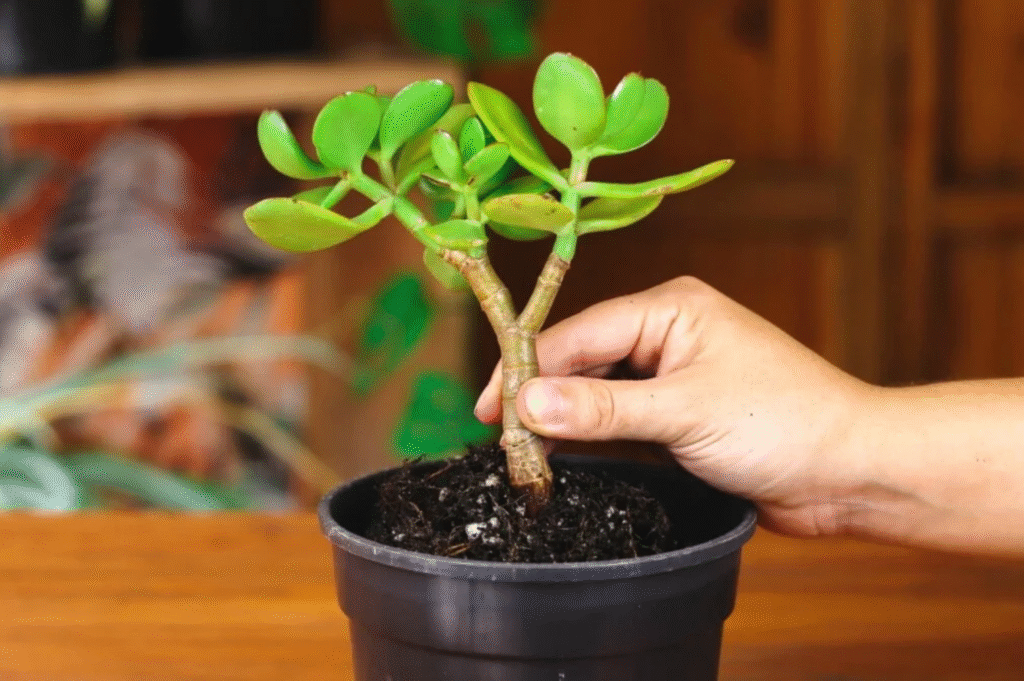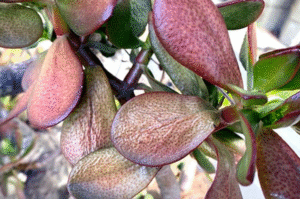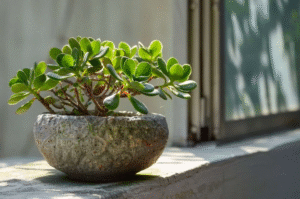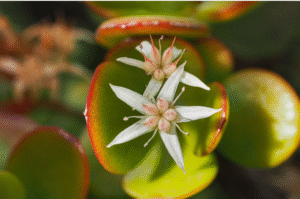Jade plants (Crassula ovata) are known for their glossy green leaves, tree-like structure, and low maintenance needs. But like any other potted plant, even jade plants need repotting at the right time for healthy growth. If you’re wondering when the best time to repot a jade plant is, this article will guide you step-by-step with professional insights and easy-to-follow advice.
Why Repotting Matters for Jade Plants
Before diving into the “when,” it’s essential to understand why repotting is necessary. Jade plants are slow growers, but over time, their roots outgrow the container, or the soil becomes depleted. If not repotted timely, the plant may face:
- Root-bound growth
- Poor drainage
- Nutrient deficiencies
- Stunted development
- Risk of root rot
Repotting refreshes the soil, gives the roots more space, and keeps the plant thriving for years.
Signs Your Jade Plant Needs Repotting
Rather than relying on a fixed schedule, it’s more effective to observe your plant. Here are common signs that indicate your jade plant is ready for repotting:
1. Roots Growing Out of the Drainage Holes
If roots are sticking out from the bottom of the pot, it’s a clear sign the plant has outgrown its container.
2. Soil Dries Out Too Quickly
When the soil becomes compacted or depleted, it loses its ability to retain moisture. You may notice that the water drains out instantly or the plant dries out faster than usual.
3. Slow or Stunted Growth
If your jade plant isn’t growing during its active season (spring/summer), despite good light and care, the soil or root space might be the issue.
4. Top-Heavy Plant
Jade plants can become top-heavy over time. If the pot can no longer support the plant’s weight, it’s time to repot into a heavier or larger container.
5. Yellowing or Dropping Leaves
While a few yellow leaves are normal, consistent leaf drop may point toward stress due to poor soil quality or root congestion.
Ideal Time to Repot a Jade Plant
Best Season: Spring or Early Summer
The best time to repot a jade plant is in spring or early summer. During this active growing period, the plant quickly adjusts to new soil and pot conditions. Repotting in spring gives it a full growing season to recover.
Avoid Repotting in Winter
Jade plants go dormant in winter, meaning they slow down their growth. Repotting during dormancy can cause stress to the plant and may result in root damage or delayed recovery.
How Often Should You Repot a Jade Plant?
As a general rule:
- Young jade plants (under 3 years) – every 2 to 3 years
- Mature jade plants (3+ years) – every 4 to 5 years
However, always consider the condition of the soil and the root system rather than just the age. If the plant looks healthy and the soil drains well, you may wait longer.
Choosing the Right Pot for Repotting
When repotting, selecting the correct pot is critical for plant health.
Size
Choose a pot 1 to 2 inches larger in diameter than the current one. Oversized pots retain more moisture, increasing the risk of root rot.
Material
- Terracotta or clay pots are ideal because they’re breathable and reduce overwatering risks.
- Avoid plastic pots unless they have excellent drainage.
Drainage
Always choose a pot with drainage holes. Jade plants are succulents and are highly sensitive to soggy roots.
Soil Type for Repotting Jade Plant
Use a well-draining succulent or cactus mix. You can also prepare your own by combining:
- 2 parts potting soil
- 1 part coarse sand or perlite
- 1 part pumice or small gravel
This mix ensures proper airflow and reduces the risk of fungal root infections.
Step-by-Step Guide: How to Repot a Jade Plant
Step 1: Prepare the new pot
Clean it thoroughly and place a mesh screen or stone over the drainage holes to prevent soil loss.
Step 2: Remove the plant gently
Water the plant 2–3 days before repotting so it slides out easily. Tilt the pot and gently tug the base.
Step 3: Inspect the roots
Check for rotting or blackened roots and trim them off with clean scissors.
Step 4: Add fresh soil
Add a base layer of the succulent mix to the new pot.
Step 5: Position the plant
Place the jade plant in the center and fill around it with soil. Don’t bury the stem too deep.
Step 6: Let it settle
Wait 3–5 days before watering. This helps any trimmed roots to callus and prevents rot.
Post-Repotting Care Tips
After repotting, your jade plant may need a little extra attention:
- Avoid direct sunlight for a few days to reduce stress.
- Hold off watering for up to a week after repotting.
- Resume your regular care routine after the plant looks stable and upright.
Common Mistakes to Avoid
Even experienced plant owners make a few repotting mistakes. Here are the key things to avoid:
- Using regular garden soil, too compact and holds moisture
- Overwatering right after repotting leads to root rot
- Potting in winter slows recovery
- Upsizing the pot too much causes water retention problems
Final Thoughts
Repotting a jade plant may seem intimidating, but it’s a straightforward task when done at the right time. Look for signs like root crowding, poor drainage, or slow growth. Spring is the best season to repot, and using the right soil and pot type will keep your jade plant happy and healthy for years.
For jade lovers, repotting is not just about giving the plant more space; it’s about giving it a fresh start. And with just a bit of care, your jade plant will reward you with lush growth and long-lasting beauty.






